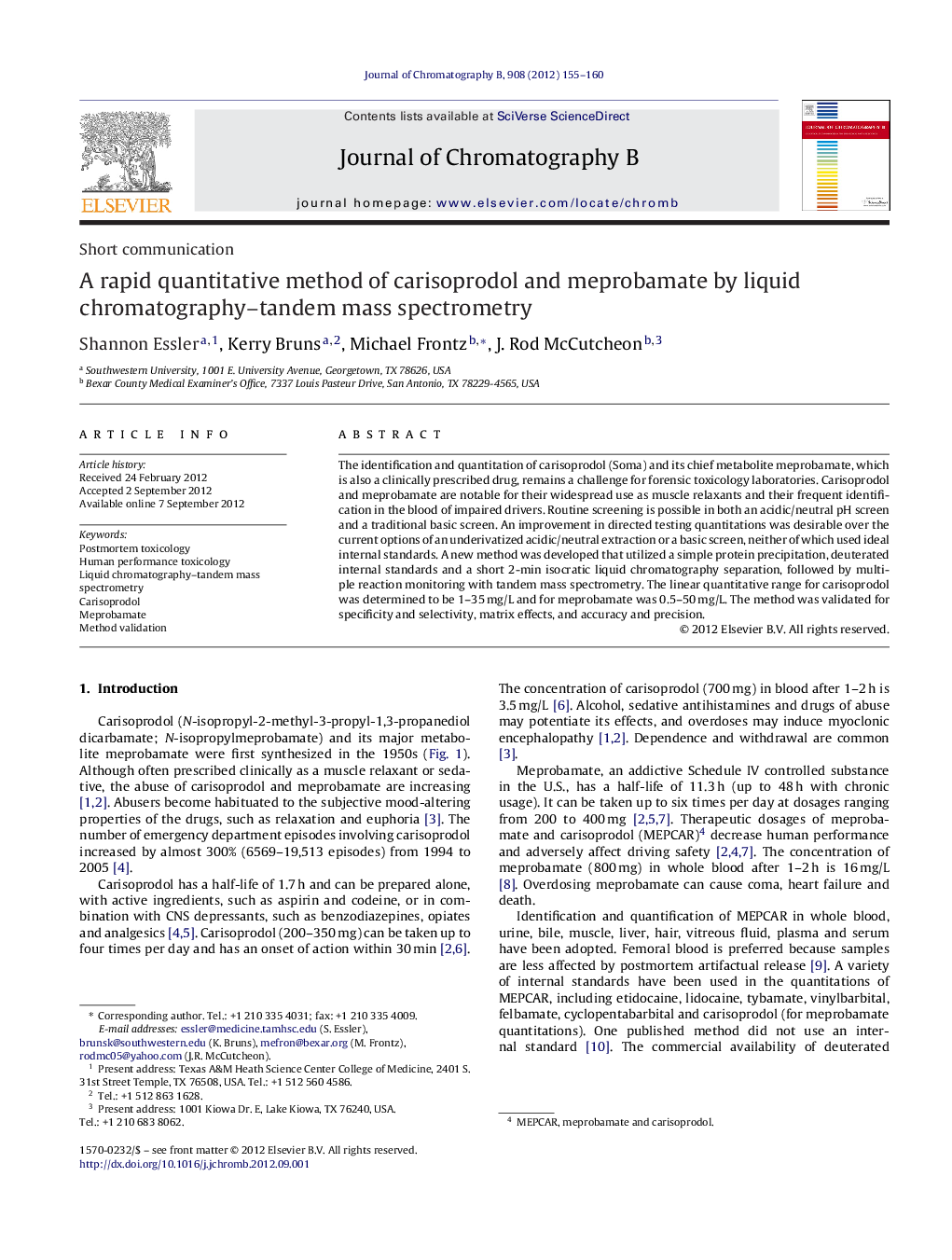| Article ID | Journal | Published Year | Pages | File Type |
|---|---|---|---|---|
| 1213700 | Journal of Chromatography B | 2012 | 6 Pages |
The identification and quantitation of carisoprodol (Soma) and its chief metabolite meprobamate, which is also a clinically prescribed drug, remains a challenge for forensic toxicology laboratories. Carisoprodol and meprobamate are notable for their widespread use as muscle relaxants and their frequent identification in the blood of impaired drivers. Routine screening is possible in both an acidic/neutral pH screen and a traditional basic screen. An improvement in directed testing quantitations was desirable over the current options of an underivatized acidic/neutral extraction or a basic screen, neither of which used ideal internal standards. A new method was developed that utilized a simple protein precipitation, deuterated internal standards and a short 2-min isocratic liquid chromatography separation, followed by multiple reaction monitoring with tandem mass spectrometry. The linear quantitative range for carisoprodol was determined to be 1–35 mg/L and for meprobamate was 0.5–50 mg/L. The method was validated for specificity and selectivity, matrix effects, and accuracy and precision.
► Carisoprodol and meprobamate are commonly encountered drugs in forensic toxicology. ► In this method, sample preparation can be performed with a minimum of materials and effort. ► Using LC/MS/MS provides less need for a clean extract and adds speed and specificity to the analysis. ► The method uses deuterium labeled internal standards for both analytes.
